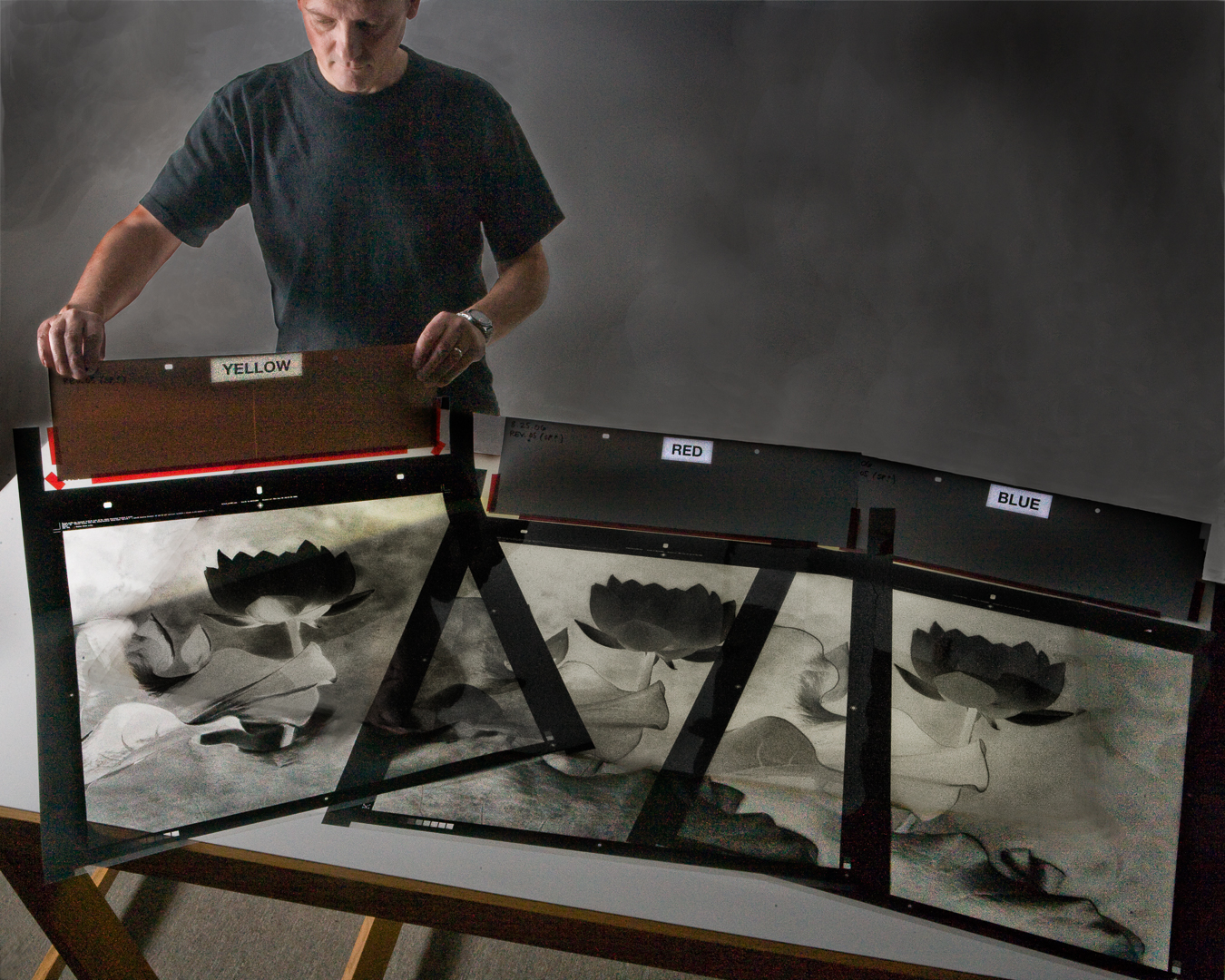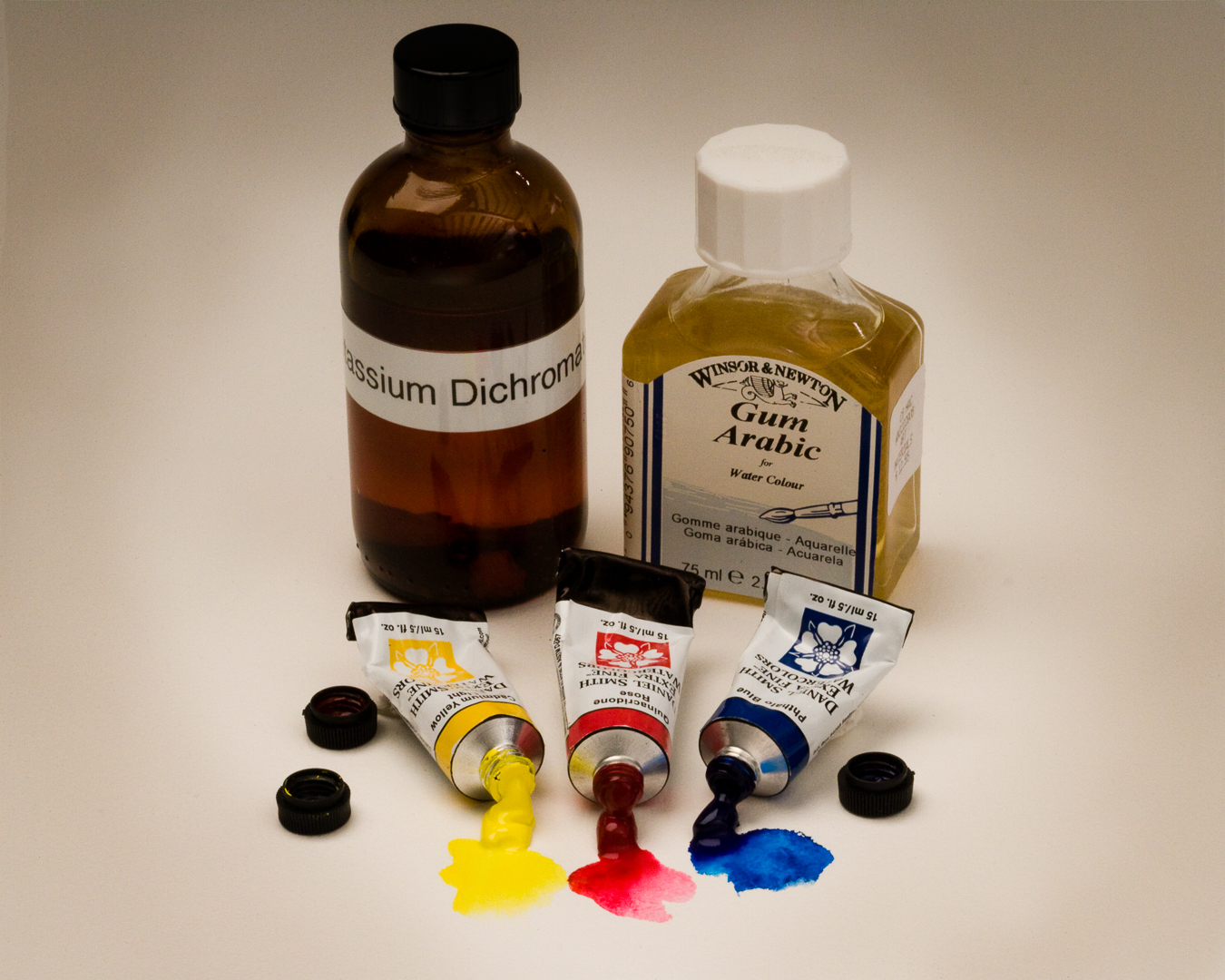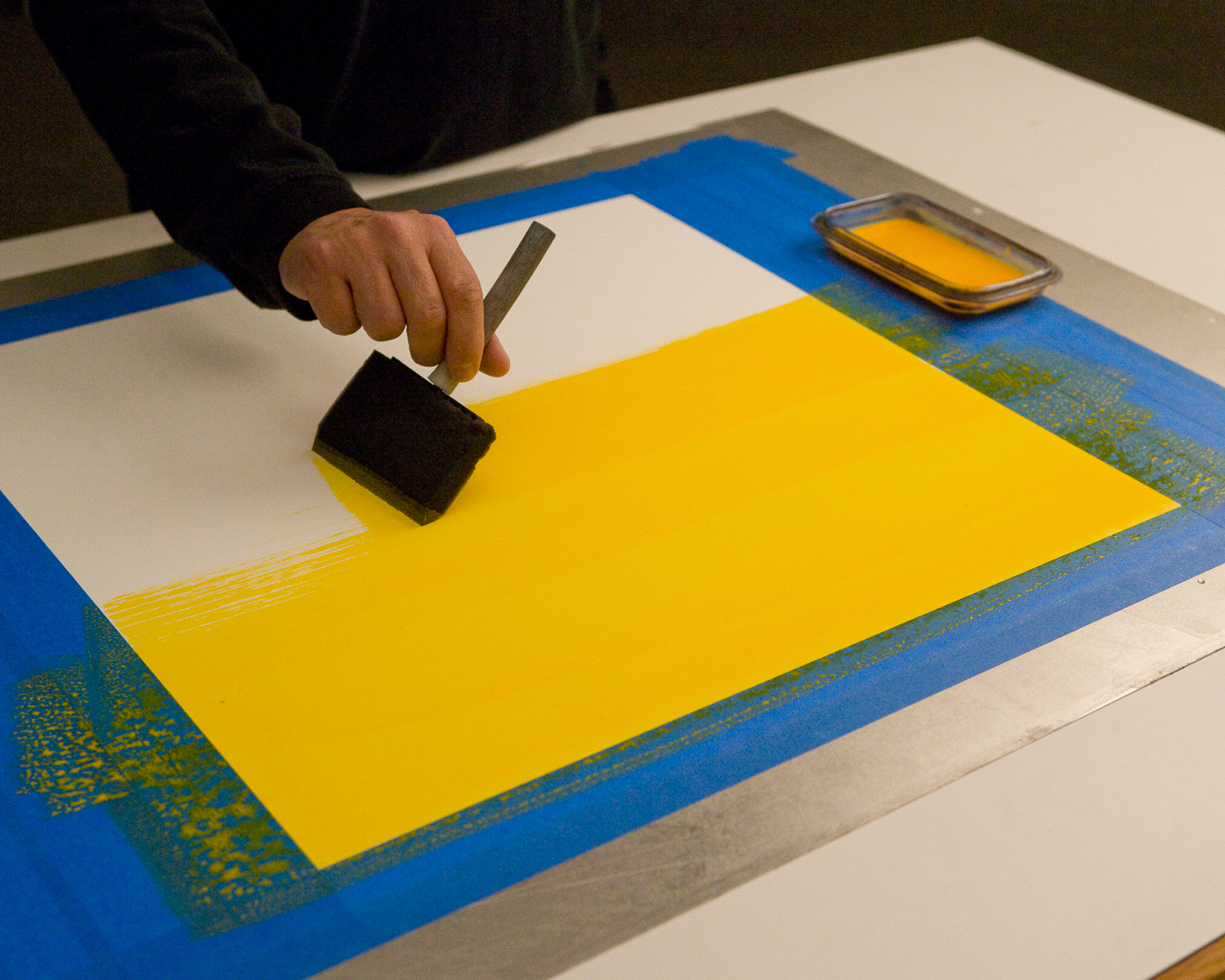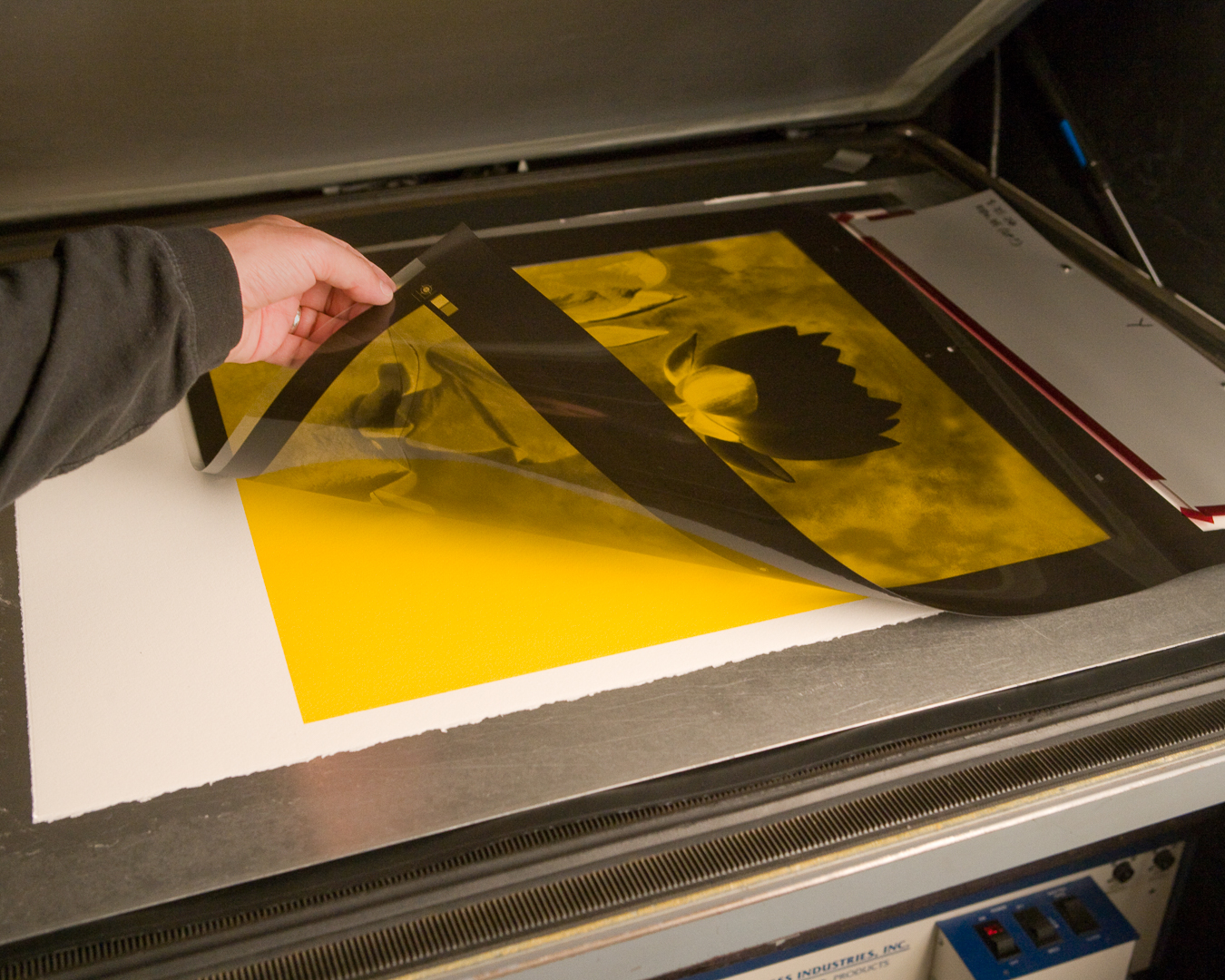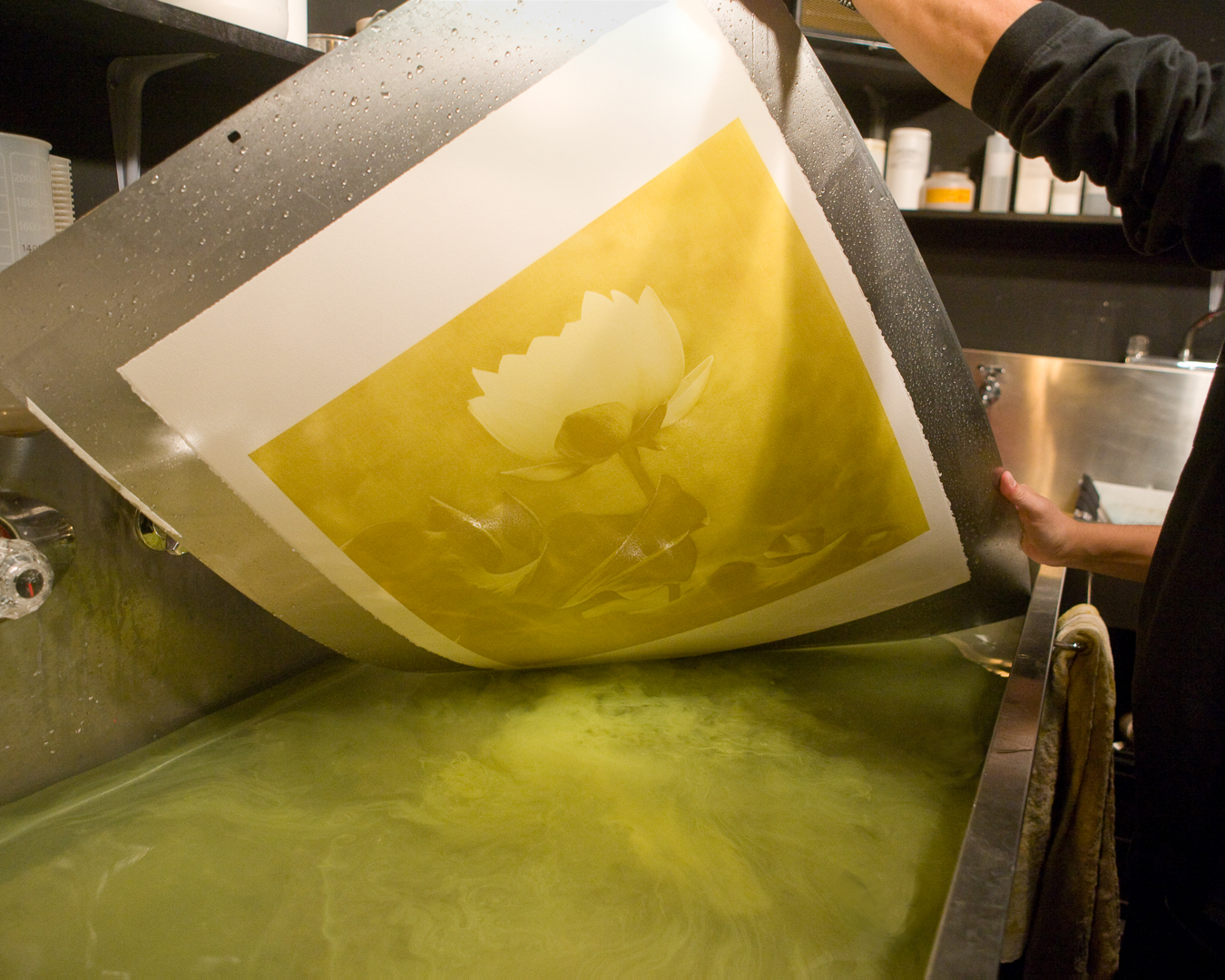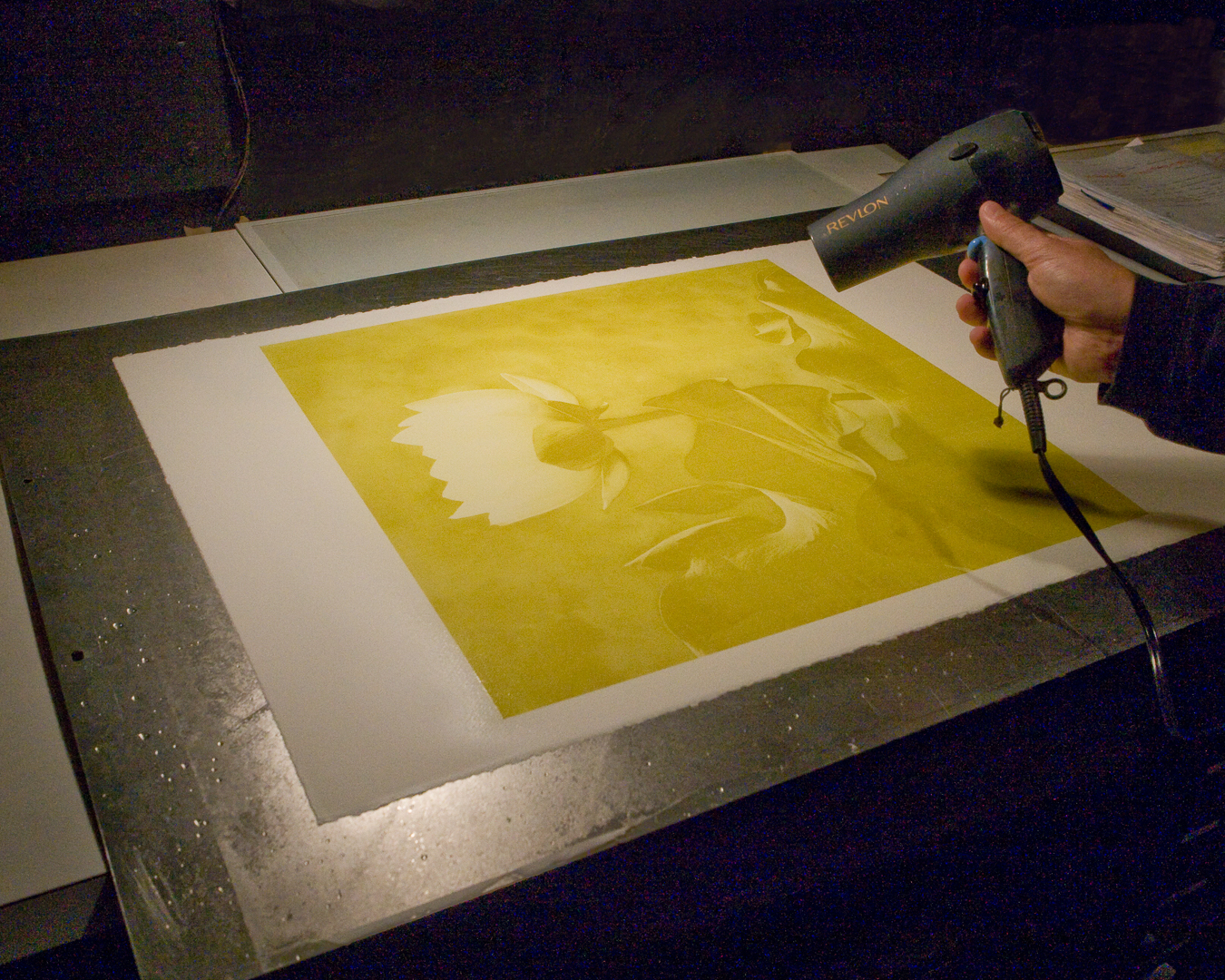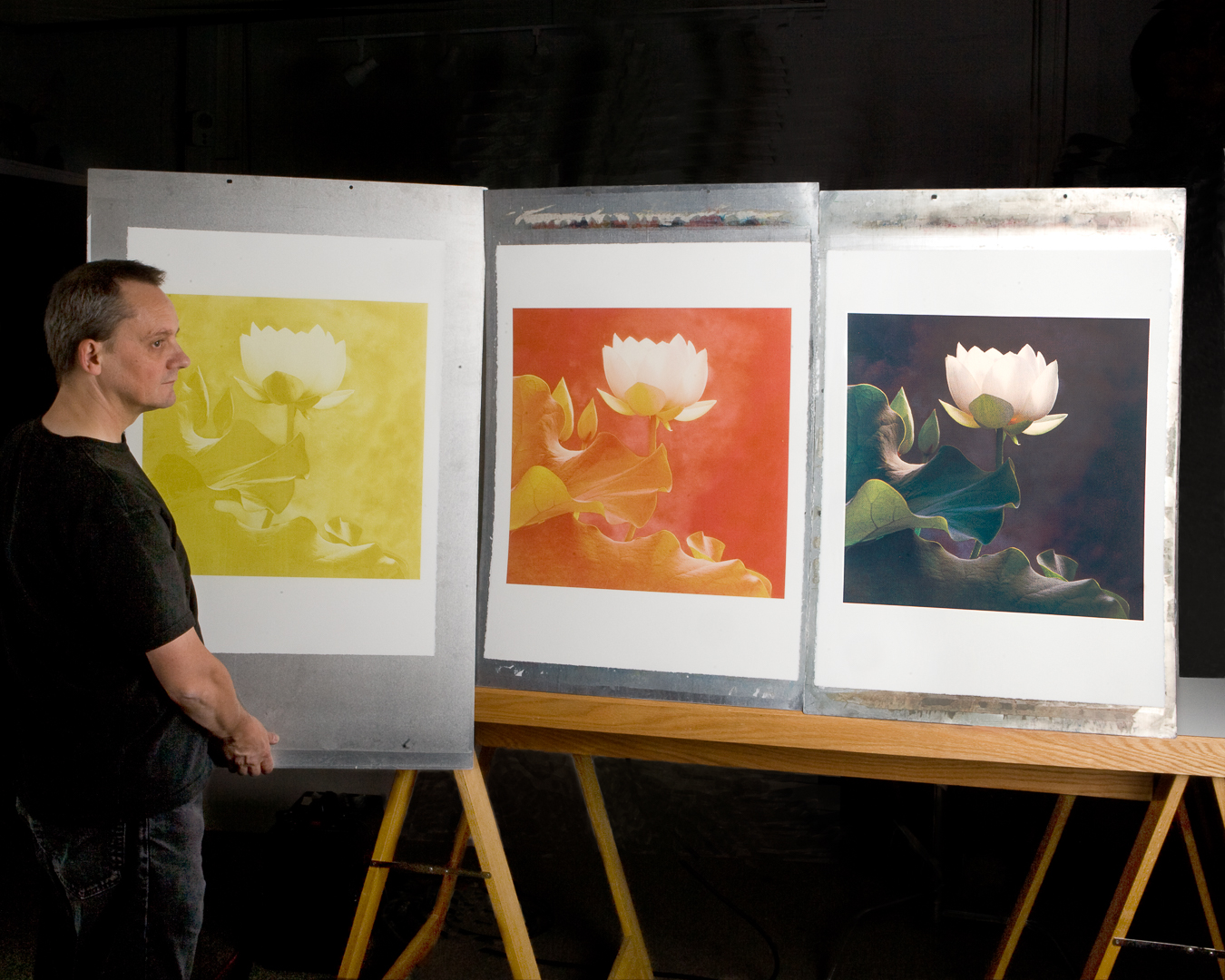The 3-Color Gum Dichromate Process
In the three-color gum dichromate process, a sheet of watercolor paper (mounted to aluminum to ensure stability) is repeatedly coated with a light sensitive emulsion containing a pigment, and the image built up in three successive printings, one for each of the colors, yellow, magenta and cyan.
The coated paper is exposed to ultraviolet light through each color separation in turn, and processed in water. The areas of sensitized gum that were exposed to the ultraviolet light harden and become insoluble forming the shadows. Those that were blocked by the denser areas of the negative remain soluble and float away in the water. These areas finally become the highlights.
After 30 minutes the print is removed from the water and dried thoroughly. This process is repeated again, once for the magenta layer and finally a third time for the cyan. At the end of the process, and usually after a day’s work, the print is finished.
The coated paper is exposed to ultraviolet light through each color separation in turn, and processed in water. The areas of sensitized gum that were exposed to the ultraviolet light harden and become insoluble forming the shadows. Those that were blocked by the denser areas of the negative remain soluble and float away in the water. These areas finally become the highlights.

